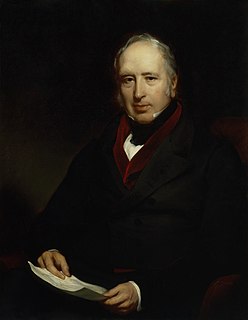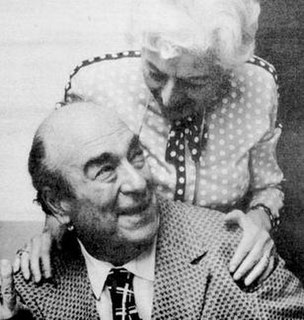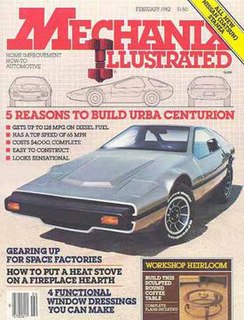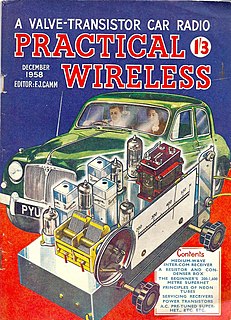
Hugo Gernsback was a Luxembourgish–American inventor, writer, editor, and magazine publisher, best known for publications including the first science fiction magazine. His contributions to the genre as publisher—although not as a writer—were so significant that, along with the novelists H. G. Wells and Jules Verne, he is sometimes called "The Father of Science Fiction". In his honour, annual awards presented at the World Science Fiction Convention are named the "Hugos".

"Do it yourself" ("DIY") is the method of building, modifying, or repairing things by oneself without the direct aid of professionals or certified experts. Academic research has described DIY as behaviors where "individuals use raw and semi-raw materials and parts to produce, transform, or reconstruct material possessions, including those drawn from the natural environment ". DIY behavior can be triggered by various motivations previously categorized as marketplace motivations, and identity enhancement.

Sir George Cayley, 6th Baronet was an English engineer, inventor, and aviator. He is one of the most important people in the history of aeronautics. Many consider him to be the first true scientific aerial investigator and the first person to understand the underlying principles and forces of flight.

Sir Sydney Camm, CBE, FRAeS was an English aeronautical engineer who contributed to many Hawker aircraft designs, from the biplanes of the 1920s to jet fighters. One particularly notable aircraft he designed was the Hawker Hurricane fighter.

Mortimer Weisinger was an American magazine and comic book editor best known for editing DC Comics' Superman during the mid-1950s to 1960s, in the Silver Age of comic books. He also co-created such features as Aquaman, Green Arrow, Johnny Quick, and the original Vigilante, served as story editor for the Adventures of Superman television series, and compiled the often-revised paperback 1001 Valuable Things You Can Get Free.

Popular Mechanics is a magazine of popular science and technology, featuring automotive, home, outdoor, electronics, science, do-it-yourself, and technology topics. Military topics, aviation and transportation of all types, space, tools and gadgets are commonly featured.

Popular Science is an American digital magazine carrying popular science content, which refers to articles for the general reader on science and technology subjects. Popular Science has won over 58 awards, including the American Society of Magazine Editors awards for its journalistic excellence in 2003, 2004, and 2019. With roots beginning in 1872, Popular Science has been translated into over 30 languages and is distributed to at least 45 countries.

The Strand Magazine was a monthly British magazine founded by George Newnes, composed of short fiction and general interest articles. It was published in the United Kingdom from January 1891 to March 1950, running to 711 issues, though the first issue was on sale well before Christmas 1890. Its immediate popularity is evidenced by an initial sale of nearly 300,000. Sales increased in the early months, before settling down to a circulation of almost 500,000 copies a month, which lasted well into the 1930s.

Popular Electronics was an American magazine published by John August Media, LLC, and hosted at TechnicaCuriosa.com. The magazine was started by Ziff-Davis Publishing Company in October 1954 for electronics hobbyists and experimenters. It soon became the "World's Largest-Selling Electronics Magazine". In April 1957 Ziff-Davis reported an average net paid circulation of 240,151 copies. Popular Electronics was published until October 1982 when, in November 1982, Ziff-Davis launched a successor magazine, Computers & Electronics. During its last year of publication by Ziff-Davis, Popular Electronics reported an average monthly circulation of 409,344 copies. The title was sold to Gernsback Publications, and their Hands-On Electronics magazine was renamed to Popular Electronics in February 1989, and published until December 1999. The Popular Electronics trademark was then acquired by John August Media, who revived the magazine, the digital edition of which is hosted at TechnicaCuriosa.com, along with sister titles, Mechanix Illustrated and Popular Astronomy.

Mechanix Illustrated was an American printed magazine that was originally published by Fawcett Publications. Its title was founded in 1928 to compete against the older Popular Science and Popular Mechanics. Billed as "The How-To-Do Magazine," Mechanix Illustrated (MI) aimed to guide readers through various projects from home improvements and advice on repairs to "build-your-own ." It was headquartered in New York City.
Frederick James "F.J." Camm was an English technical author and magazine editor. He founded several radio and electronics titles, including Practical Mechanics, Practical Motorist, Practical Television, and Practical Wireless, some of which are still in circulation.

Practical Wireless is a British amateur radio magazine, published monthly by Warners Group Publications.

Aquila is a monthly UK-based educational children's magazine that offers an alternative to mainstream publications. It is for boys and girls of 8-13 and features puzzles, fun facts and activities - and is advert-free. Each issue revolves mainly around a specific topic, for example Captain Cook, Science Special, The Equator and Medieval Times - all covered in 2013.

Woman's Home Companion was an American monthly magazine, published from 1873 to 1957. It was highly successful, climbing to a circulation peak of more than four million during the 1930s and 1940s. The magazine, headquartered in Springfield, Ohio, was discontinued in 1957.
The English Mechanic and World of Science, commonly referred to as English Mechanic, was a popular-science magazine, published weekly from 1865 to 1926, generally consisting of 24 pages. It was aimed at people interested in inventions and gadgets and new discoveries in science, technology, and mathematics. A regular chess column was also included, written by James Pierce.

Performance Bikes, often known by the shortened form of "PB", was a monthly British motorcycling magazine which evolved during the 1980s from the long-running Motorcycle Mechanics. The first issue dated April 1985 and entitled Performance Bikes & Mechanics published by EMAP also incorporated the previous version of the title Mechanics and The Biker.

Backwoods Home Magazine is a quarterly American magazine. It was founded in 1989 in a garage in Ventura, California, by Dave Duffy and his seven-year-old daughter, Annie. After publication of the second issue, Duffy met Ilene Myers, who became his wife and partner-in-publication. Backwoods Home remains family-owned. It is based in Philomath, Oregon.
Opera is a monthly British magazine devoted to covering all things related to opera. It contains reviews and articles about current opera productions internationally, as well as articles on opera recordings, opera singers, opera companies, opera directors, and opera books. The magazine also contains major features and analysis on individual operas and people associated with opera.
George Newnes Ltd is a British publisher. The company was founded in 1891 by George Newnes (1851–1910), considered a founding father of popular journalism. Newnes published such magazines and periodicals as Tit-Bits, The Wide World Magazine, The Captain, The Strand Magazine, The Grand Magazine, John O'London's Weekly, Sunny Stories for Little Folk, Woman's Own, and the "Practical" line of magazines overseen by editor Frederick J. Camm. Long after the founder's death, Newnes was known for publishing ground-breaking consumer magazines such as Nova.

William A. Radford (1865–1943) was an American architect and publisher of numerous architectural and construction books via his Radford Architectural Company in Chicago, Illinois.
















